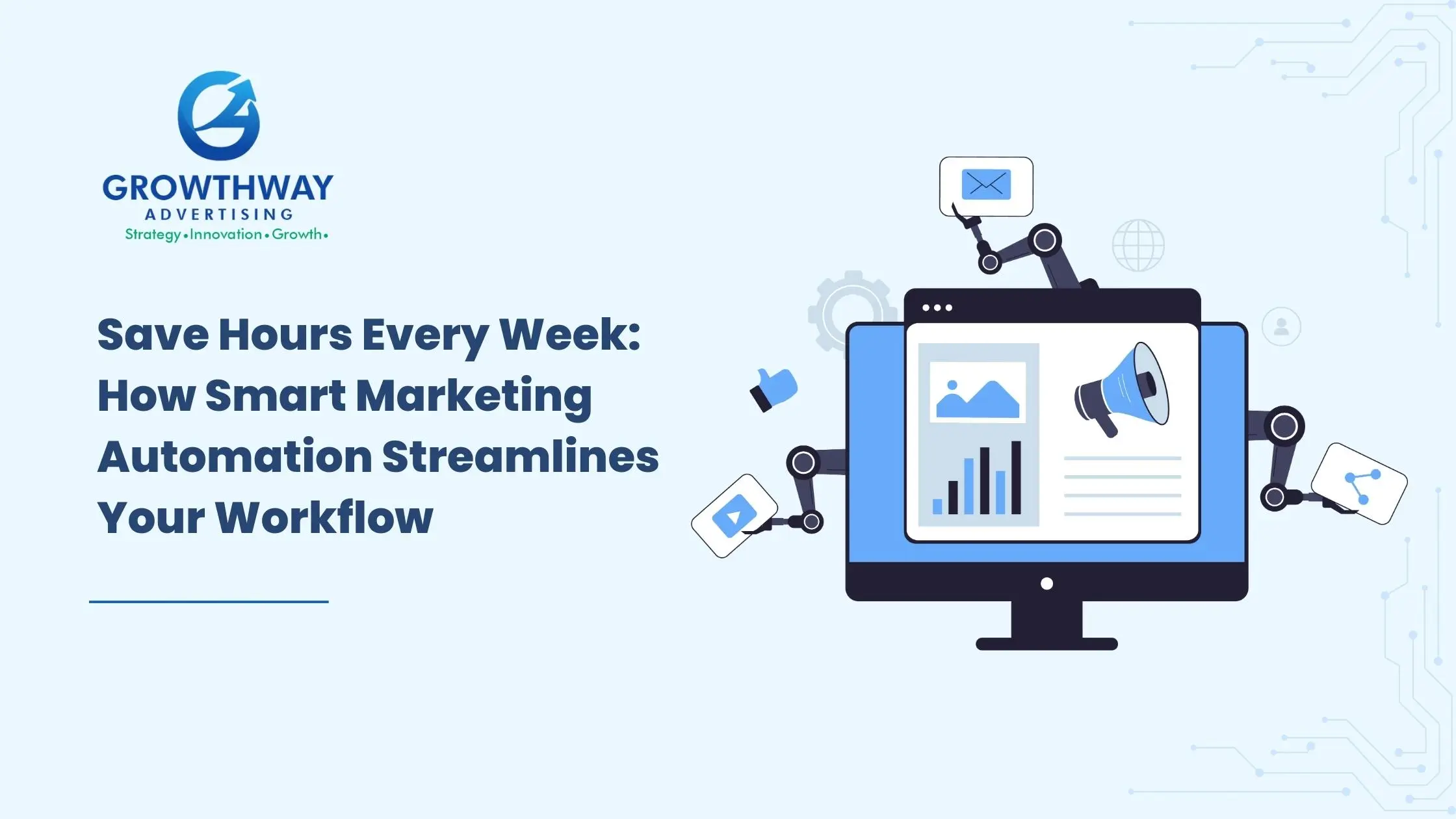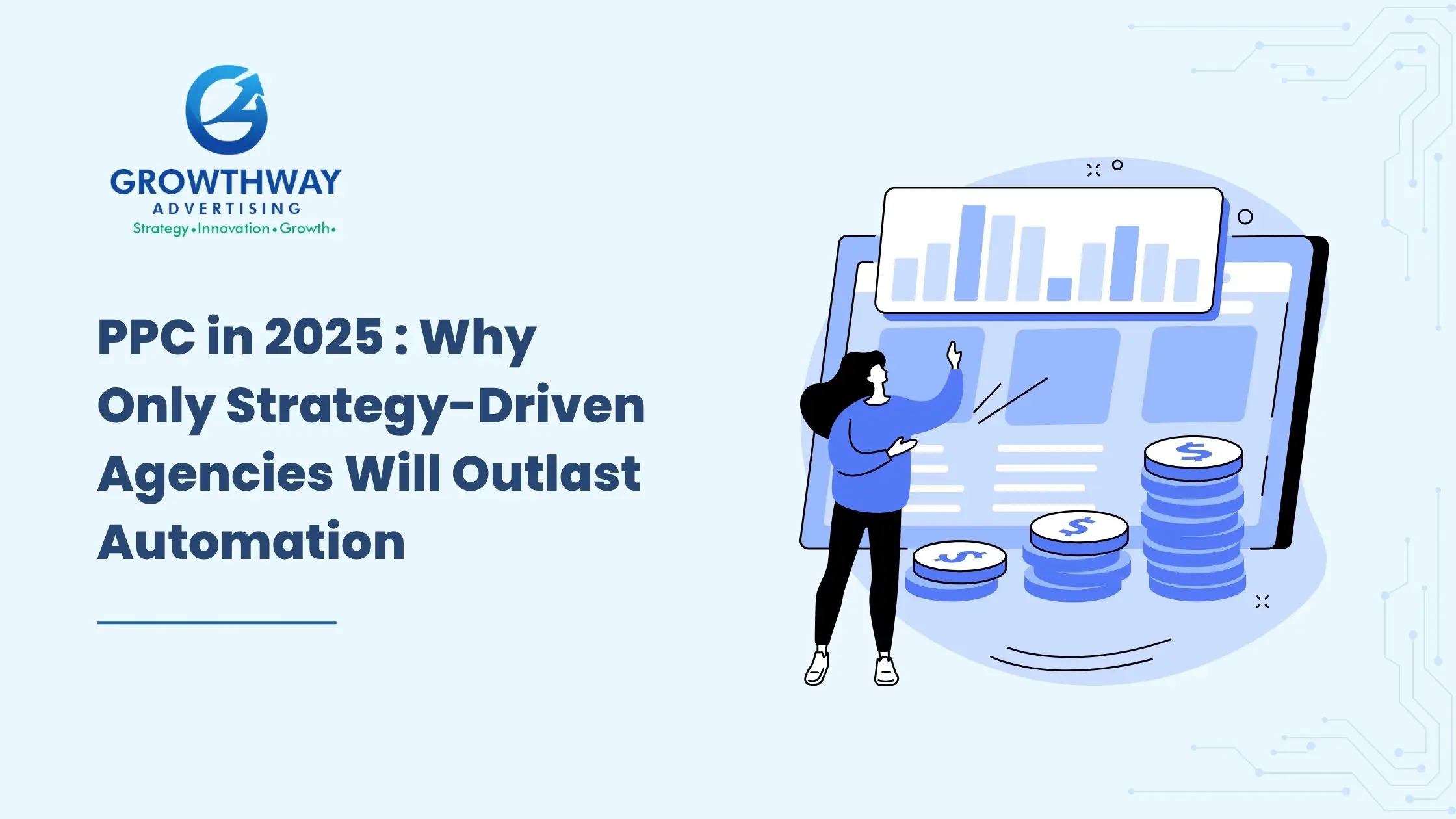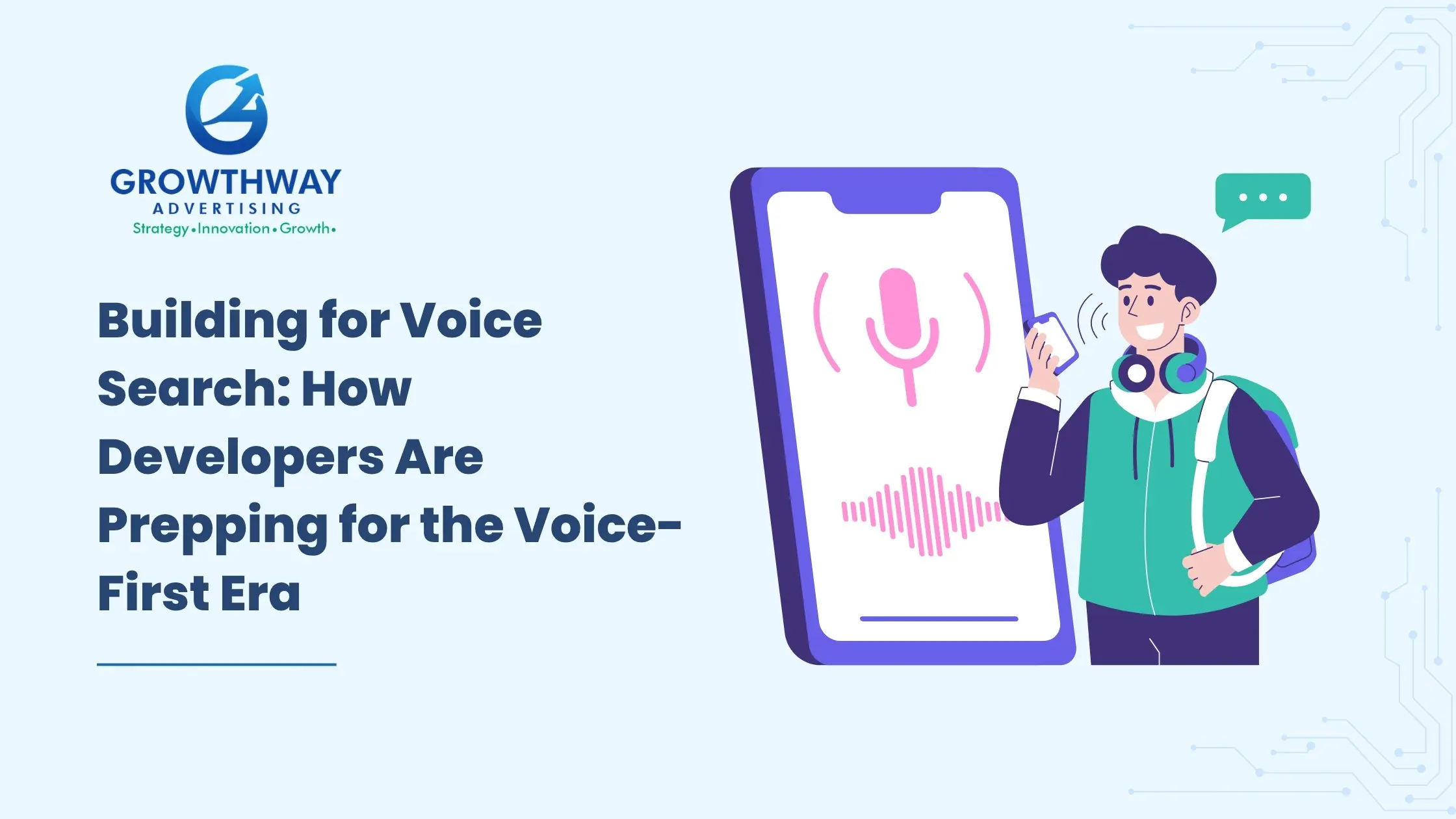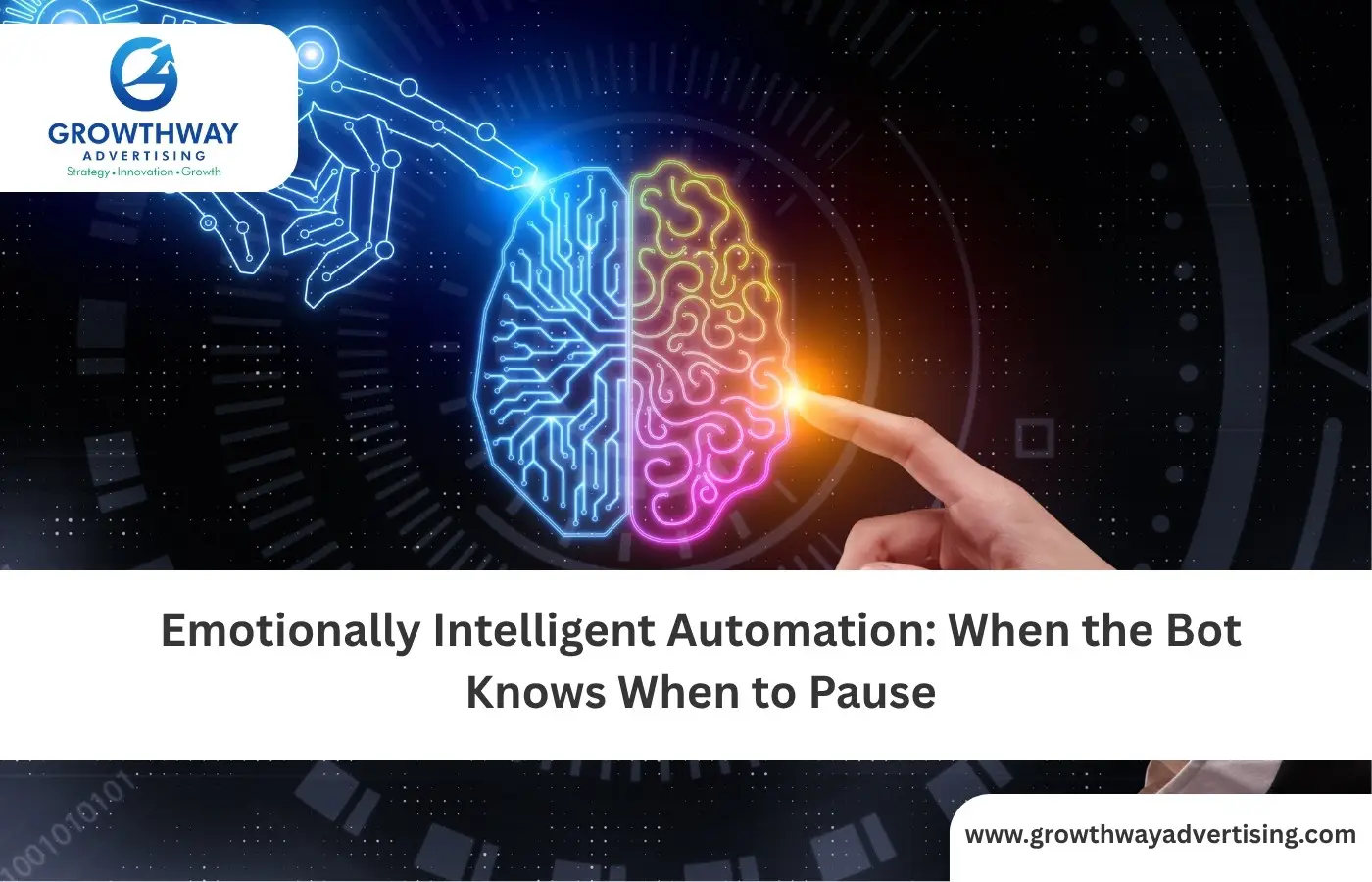Every marketer knows the feeling: one day your engagement looks solid, the next it’s halved. A new algorithm change rolls out, and what worked yesterday suddenly stops performing.
Here’s the thing, this won’t stop happening. Platforms evolve constantly. The real challenge isn’t reacting; it’s building social campaigns that survive algorithm shifts in the first place.
Let’s break down what that actually takes.
Understand What Algorithms Really Want
Most people treat social media algorithms like mysterious black boxes. In reality, they’re machine learning systems built to maximize user satisfaction. They reward content that holds attention, sparks interaction, and matches intent.
What this really means is that meaningful engagement has replaced vanity metrics. Shares, saves, comments, and watch time weigh more than likes. These signals tell algorithms that your content adds value and that’s what keeps your visibility consistent across updates.
If you run a social media marketing agency or manage in-house campaigns, your focus shouldn’t be on “gaming” algorithms but on aligning your social media content strategy with what platforms actually value.
Shift From Platform Dependence to Audience Ownership
Too many brands rely entirely on a single network. When that feed changes, their entire reach collapses. A smarter move is to build systems that own your audience, not just borrow it from a platform.
Start with:
- Growing an email list through gated content or lead magnets
- Encouraging your most loyal followers to join private communities (Discord, WhatsApp groups, Slack, etc.)
- Repurposing content across multiple platforms with a unified omnichannel social strategy
This way, if the Instagram algorithm changes overnight, you still have other channels feeding engagement, traffic, and conversions.
That’s the safety net every serious marketer needs.
Build Campaigns Around Data, Not Trends
Here’s where most campaigns fail: they follow trending content instead of analyzing what actually performs for their brand.
A data-driven social marketing approach gives you stability through the chaos. Instead of reacting emotionally to reach drops, you can diagnose problems rationally.
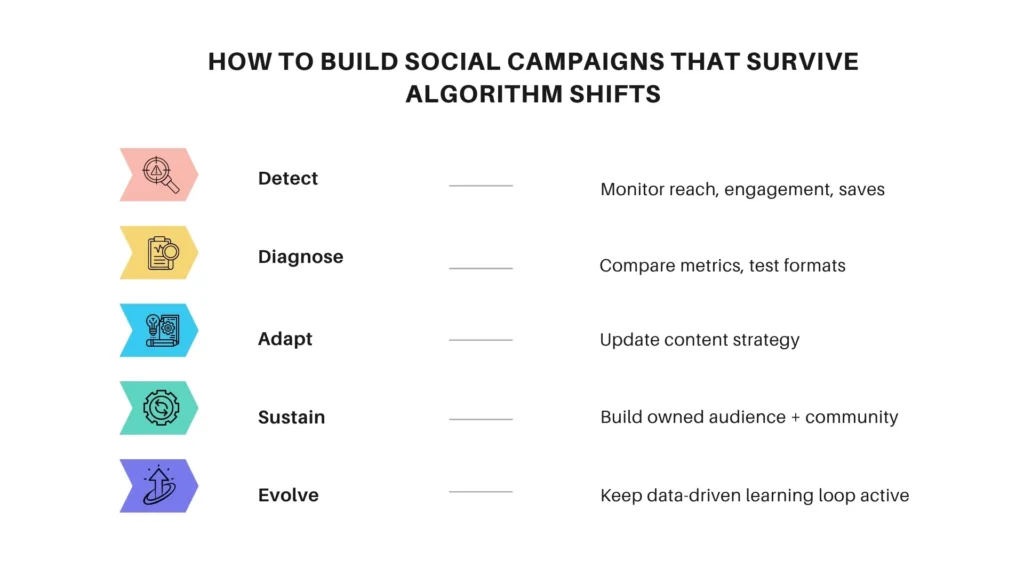
Key steps to make data work for you:
- Monitor reach patterns — a sudden 20–30% drop usually signals a small algorithm shift.
- Compare engagement types — saves and shares are better indicators of future reach than likes.
- Run A/B tests — tweak captions, thumbnails, or CTAs systematically, not randomly.
- Track lifetime post performance — see how evergreen content behaves after updates.
Platforms reward consistency and insight, not guesswork. If your social media management process includes analytics reviews and controlled testing, algorithm updates become less of a threat.
Content That Survives: Evergreen, Relatable, and Human
Algorithms reward content that keeps getting engagement over time. That means your survival strategy depends on creating evergreen content that people can connect with months later.
Here’s how to structure that:
- Focus on problem-solving posts: tutorials, how-tos, and industry insights.
- Use emotionally resonant storytelling that makes users respond or share.
- Balance high-production visuals with genuine, behind-the-scenes moments.
In short: don’t chase every new format. Invest in content with staying power.
Even on platforms like Instagram and TikTok, the algorithm favors storytelling and authenticity. When your posts consistently generate meaningful engagement, you build algorithmic credibility, a sort of “trust score” that helps you stay visible through updates.
Treat Paid and Organic as One System
One of the biggest missed opportunities in most brands’ playbooks is the disconnect between social media ads and organic content.
When algorithm shifts reduce organic reach, many teams panic and dump more budget into paid campaigns but that’s a short-term fix. Instead, treat organic performance as a testing ground for your social media advertising strategy.
Here’s a better approach:
- Test creative variations organically first see which visuals and captions spark engagement.
- Promote only top-performing posts as ads this saves budget and ensures higher relevance scores.
- Sync your social workflow management so the ad team and content team share the same insights.
This integrated view where social media marketing and advertising feed each other is how you build campaigns resilient enough to weather updates.
Balance Automation With Human Oversight
Automation is your friend when it’s used thoughtfully. A structured social workflow management system can help teams maintain consistency even during turbulent algorithm phases.
Schedule intelligently, but keep room for spontaneity. Use automation tools to:
- Batch and queue posts
- Track analytics across platforms
- Identify best-performing times to post
- Manage cross-platform repurposing
But don’t let automation strip away authenticity. Algorithms can now detect repetitive posting patterns. A hybrid approach automation for efficiency, humans for tone and timing is the sweet spot.
Use Predictive Signals to Stay Ahead of Algorithm Shifts
You can’t predict every algorithm update, but you can detect early warning signs.
Start by tracking:
- Sudden dips in average engagement across multiple platforms
- Declines in video completion rates
- Lower-than-usual reach for consistent posting frequency
Set up analytics dashboards that flag unusual drops automatically. These are your early signals that something’s changed in the algorithm ecosystem.
Once you notice them, run controlled tests: adjust one factor at a time (posting time, caption length, format). Data will tell you whether you’re seeing a platform shift or simply audience fatigue.
This proactive approach spotting and adapting before competitors defines strong social media services today.
Design for Cross-Platform Longevity
Most marketers repurpose content by copy-pasting, but each platform’s algorithm has unique signals.
For instance:
- Instagram algorithm favors saves and shares; videos with quick engagement perform best.
- LinkedIn rewards dwell time on text posts and thoughtful comment threads.
- TikTok values early watch completion and replays.
- Facebook focuses on meaningful interactions between real people.
Instead of republishing identical posts, build one creative asset and tailor it natively for each feed. This social media content strategy ensures that even if one platform’s algorithm tightens, others keep your visibility steady.
That’s how you create what can be called “multi-platform resilience” your insurance policy against algorithm volatility.
Make Engagement a Two-Way Street
The phrase “engagement” gets thrown around a lot, but few brands understand what actually sustains it long-term.
Responding to comments quickly, resharing user-generated content, and running polls are small but powerful signals. Algorithms read these interactions as proof of community value.
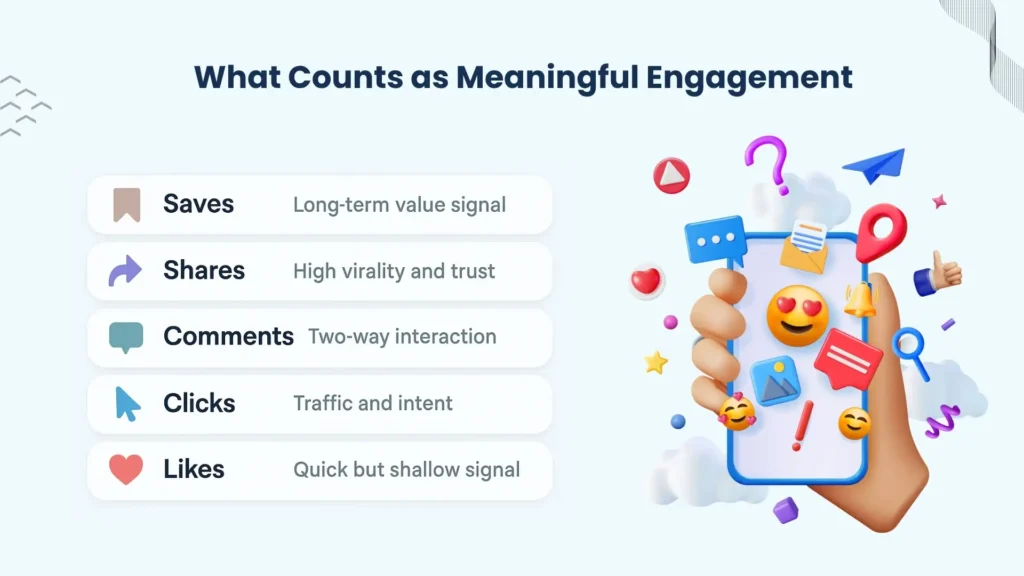
Consistent, two-way meaningful engagement signals reliability, a key component of ongoing visibility.
For agencies offering social media marketing services, this is where you can differentiate: not by posting more, but by fostering actual conversation loops between brand and audience.
Use Trending Hashtags Wisely — Not Blindly
Yes, Trending Hashtags can boost discoverability. But the algorithm doesn’t just reward popular tags; it rewards relevance.
Here’s the smarter play:
- Pair trending tags with evergreen branded tags.
- Don’t overload captions; focus on context and storytelling.
- Monitor which hashtags bring sustained engagement, not just one-time spikes.
This is part of a balanced social media marketing mix, a strategy that combines virality with stability.
Build a Resilient Infrastructure
Finally, longevity comes down to infrastructure. Every brand serious about stability should document:
- A content calendar linked to analytics
- An experimentation framework
- Version control for creatives
- Clear SOPs for reacting to algorithm volatility
That’s not just smart marketing, it’s sustainable marketing. When your systems are repeatable, your team can adapt without panic every time algorithm changes roll out.
What This All Means
Building campaigns that survive algorithm shifts isn’t luck. It’s a repeatable system of insight, adaptation, and ownership.
Whether you’re running a social media marketing agency, managing in-house social media ads, or handling daily posts for clients, resilience comes from strategy, not hacks.
Create content worth engaging with. Diversify your platforms. Automate what you can, analyze what you can’t, and always put your audience above the algorithm.
That’s how you stay visible when everyone else fades.
FAQ’s
Platforms update algorithms to improve user experience, fight spam, and surface more relevant content. These changes often alter how posts are ranked and shown.
Diversify channels, monitor analytics weekly, and maintain direct audience connections like email lists or communities.
Evergreen, story-driven, and problem-solving content tends to stay visible. Focus on quality engagement instead of quantity.
Less than organic reach but aligning social media ads with high-performing organic posts improves ad relevance and lowers cost per click.
Focus on omnichannel social strategy, consistent posting, and building owned assets like email lists and communities.
They boost discovery temporarily, but long-term engagement comes from relevance and storytelling, not hashtag volume.








